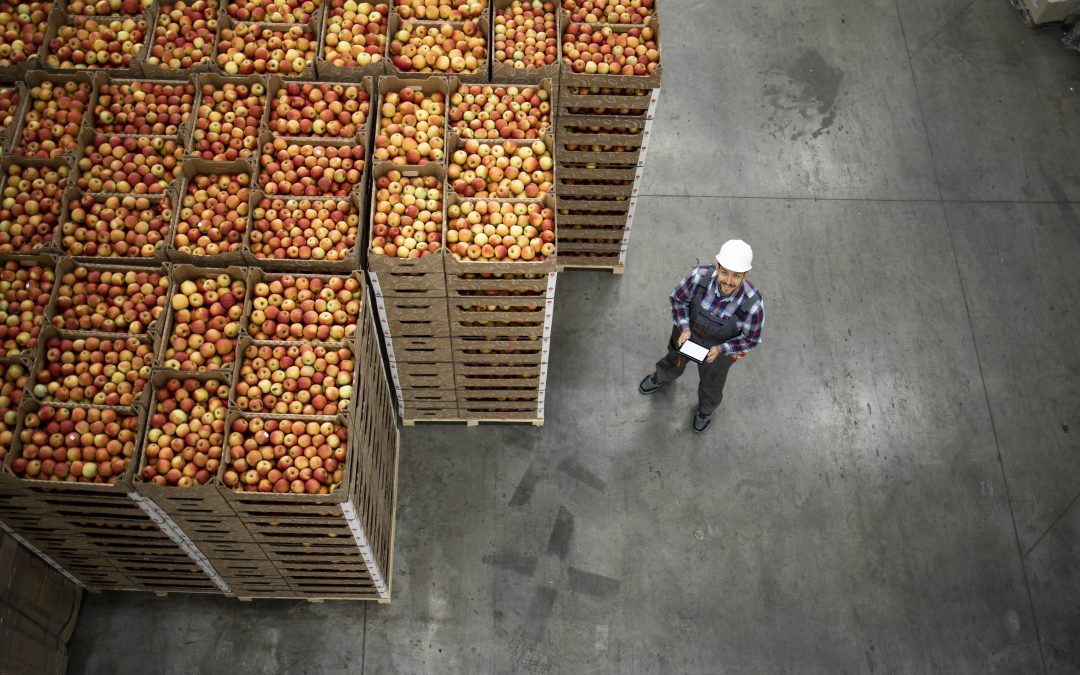AgTech in farming has significantly boosted outputs, from the fields to packing lines to shipping. These advances help our farmers feed more people while resources such as water become scarce and labor costs increase. But there’s a catch—increased cybersecurity risk.
In a recent episode of the Tip of the Iceberg podcast, our VP of Operations, Eric Regnier, emphasized the critical need for the agricultural sector to acknowledge and address the cybersecurity challenges that accompany tech advancements.
With Great Power Comes Great Responsibility
Regnier is spot-on, saying, “As we weave more technology into our everyday life, we need to remember that the more technology we use, the more opportunities we’re potentially creating for cybercriminals.” New technology can mean new vulnerabilities if not properly implemented and secured.
For the agricultural industry, this expanded attack surface poses a significant threat.
We’ve seen instances where bad actors have targeted devices such as internet-enabled sensors (including fish tanks) and exploited security gaps to access the network more broadly. These attacks led to significant disruptions in operations and financial losses. Into the millions of dollars. The reality is stark: the attackers are well-resourced, well-organized, and only need to succeed once. Unfortunately, cybersecurity risk increases every day-by-day.
We need to stay alert because these folks are the real deal. They’re pros,” Regnier said. “And they aren’t coming for someone else. They’re coming for us.
Cybercriminals don’t care who you are; they’ll target any operation, big or small. Everyone is equally at risk. The question then becomes, how do we keep ag industry tech innovations moving forward without leaving ourselves open to attacks? How do we ensure your systems are safe so you can continue feeding the country?
The Offensive Play
Regnier suggests a comprehensive offense that acknowledges the need for a strong defense and emphasizes two key elements:
1. Organizational Commitment to a Layered Security Model
Adopting a layered cybersecurity model involves integrating all aspects of your organization—people, processes, and technology—into a cohesive system that works collaboratively to keep your systems secure.
It’s not just about the technology you use but the collective strength of your entire organizational ecosystem. Every asset is a potential risk to your operations, which extends to the operations of your connected partners and vendors.
As executives and IT leadership, your role is crucial in addressing cybersecurity risk with anyone accessing your networks. Your commitment and vigilance are key to the success of our cybersecurity efforts.
2. Robust Incident Response Plan
When we acknowledge the inevitability of breaches (80% of U.S. companies say they’ve been hacked), it is easy to see how crucial a robust incident response plan is. This plan should include steps for detecting and responding to security incidents, as well as procedures for communicating with stakeholders and recovering from an attack.
The plan should also outline how to minimize the impact of a security incident and allow companies to refuse ransom demands. Being prepared is as vital as prevention.
The Bright Side – Mitigating Cybersecurity Risk
Continuous improvement is already an industry standard. Podcast co-host Melinda Goodman from FullTilt Marketing highlights the ag industry’s adoption of continuous improvement for food safety and sustainability. She suggests applying the same approach to developing cybersecurity risk strategies would advance and strengthen the industry’s cybersecurity posture.
Through our new Cybersecurity Assessment for Ag, ZAG stands ready to assist the agricultural community in identifying their vulnerabilities and safeguarding their operations. We are committed to supporting you in this journey towards a more secure future.
By collectively preparing and defending, we are improving the resilience of the nation’s food supply chain against the ever-evolving landscape of cyber threats.
Listen to the Podcast
For more insights and a deeper dive into Eric’s journey from spending summers on the family farm to spending months underwater to becoming ZAG’s VP of Operations, tune in to hear the full interview.
We launched an informative 12-episode podcast series talking all things ag tech, from new tech applied to organic fruit to ZAG’s security, AI, robotics, and everything in between. We will be joined each episode by a respected thought leader in the industry to share their knowledge and learnings with all of us. Join us as we uncover how technology reshapes the agricultural landscape and drives farming practices.



